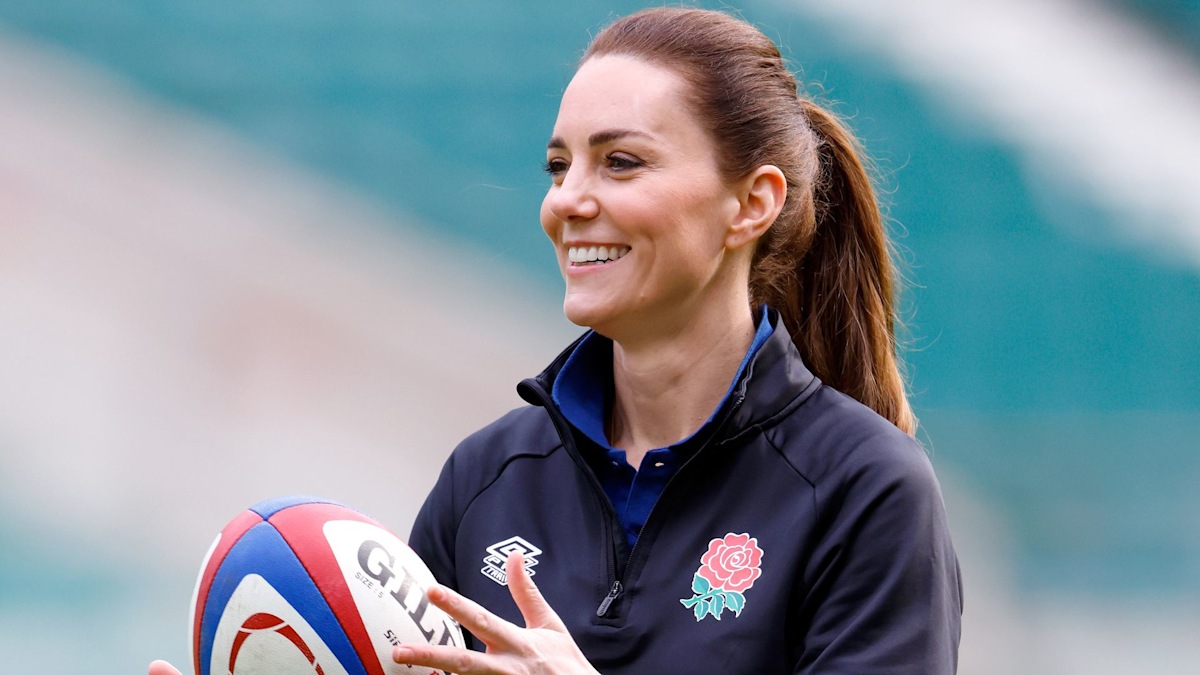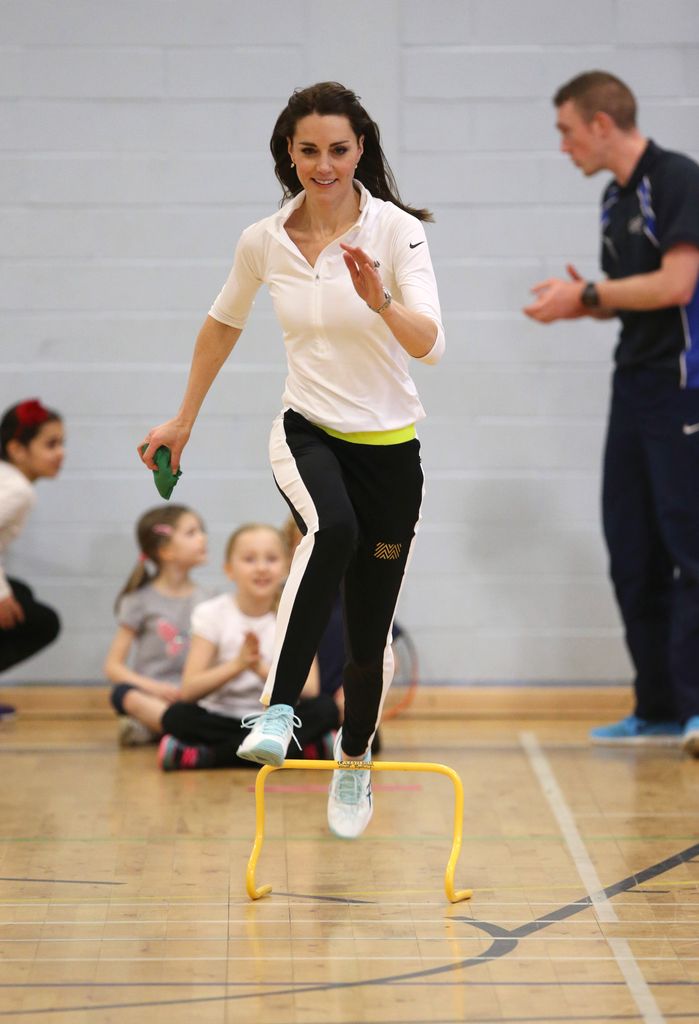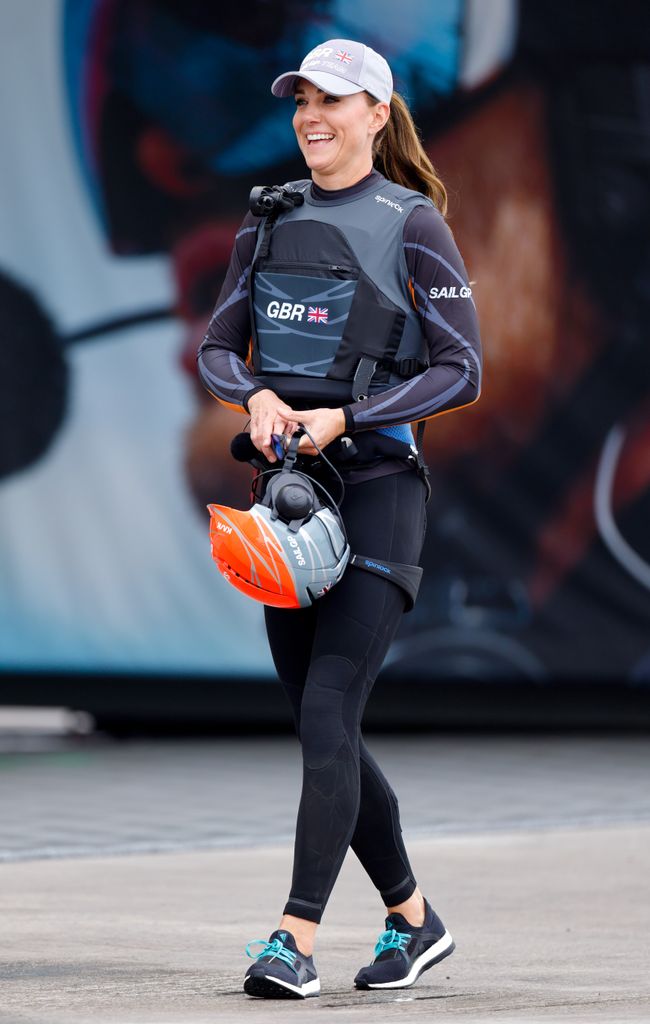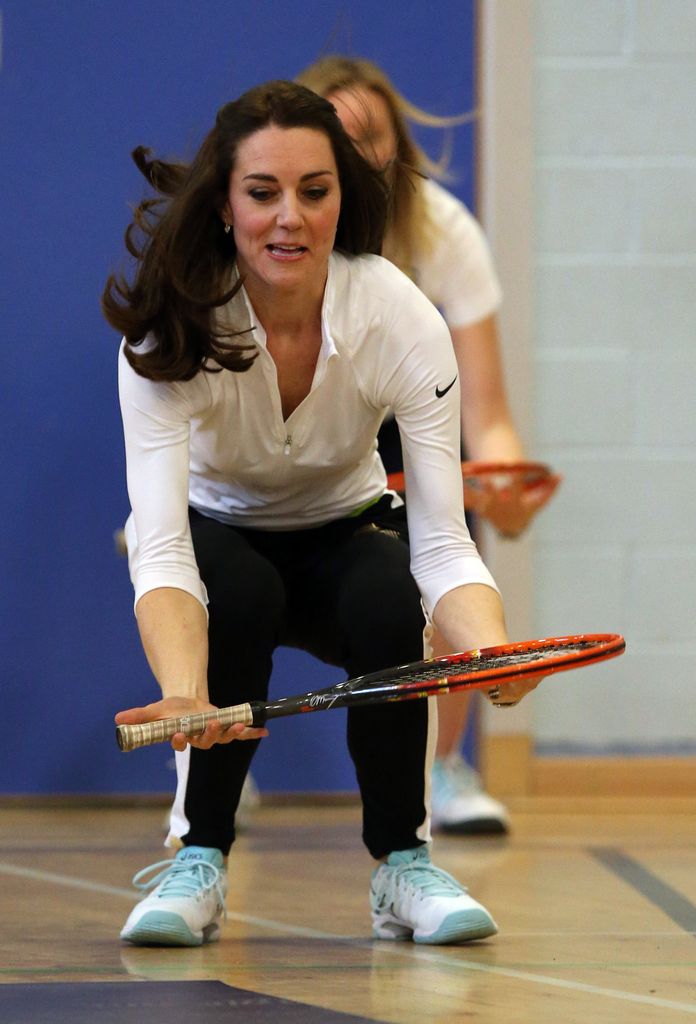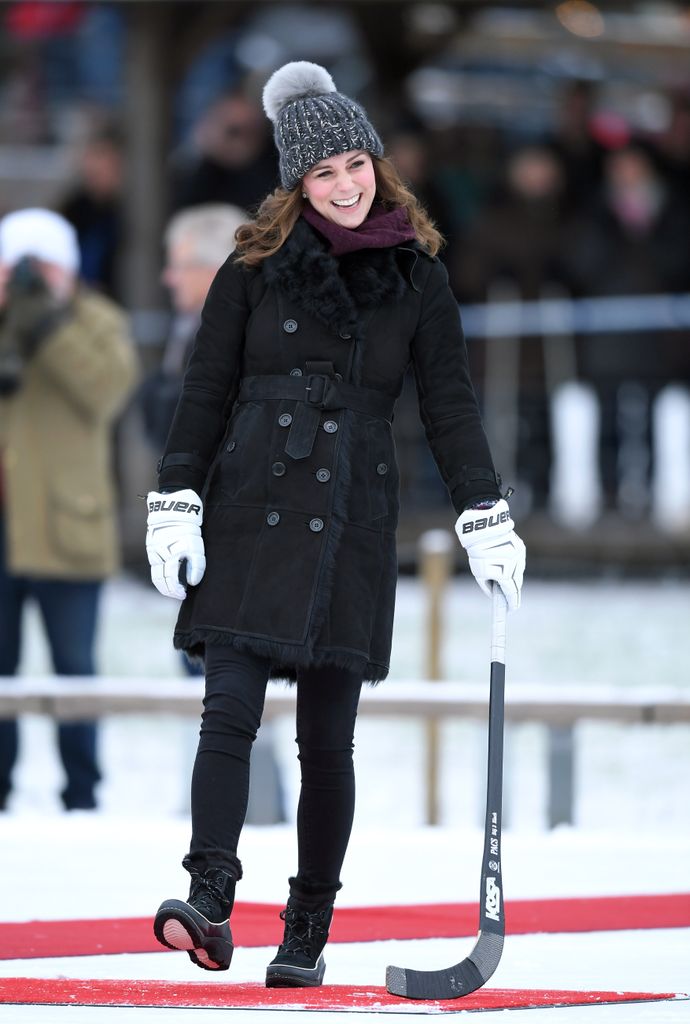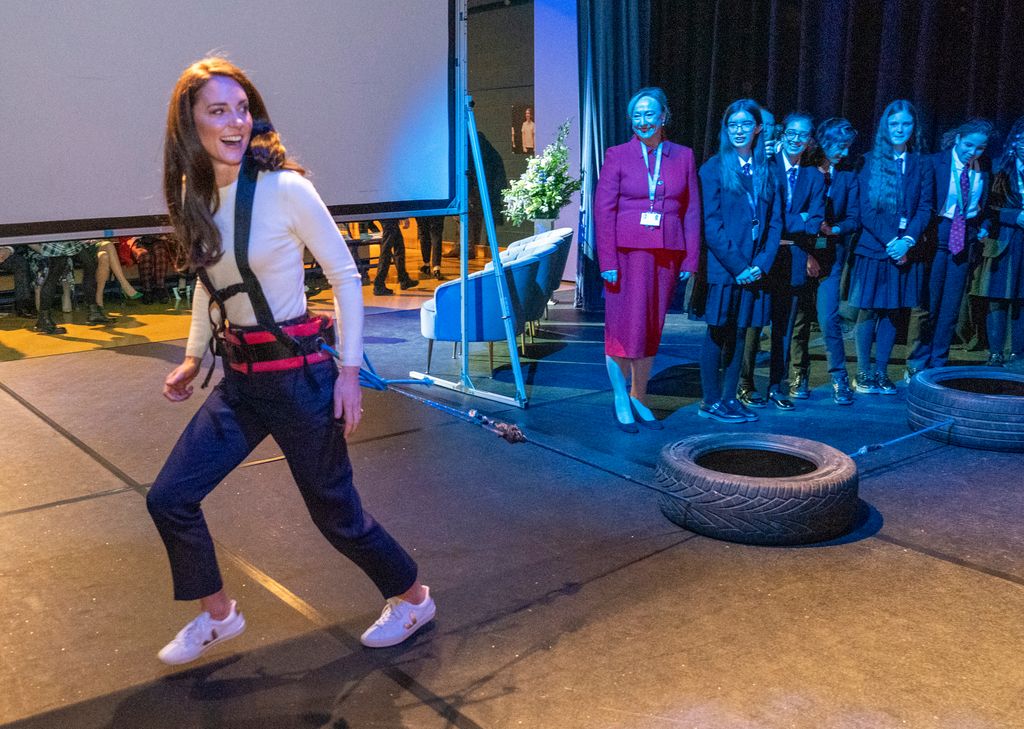It is no secret that the Princess of Wales has a natural flair and passion for sports. However, on a long-forgotten royal outing in 2016, Kate, 43, was seen taking part in a tennis workshop with Andy Murray’s mother Judy at Craigmount High School in Edinburgh, where she sat on the ground with her legs bent and arms in the air.
The sporty move showed Kate’s incredible core strength as she held her body at a 60-degree angle with ease. Personal trainer and founder of Ladies Who Crunch, Nancy Best, says it is no mean feat.
Kate’s ‘challenging’ exercise
“This position is a variation of a V-sit with an overhead reach,” Nancy explains. “This is a dynamic exercise that targets multiple muscle groups, including the transverse abdominals and the internal obliques.”
Nancy says that to develop the strength to hold this position, compound exercises are an excellent place to start.
“They often get overlooked because they don’t get marketed as specific ‘ab’ exercises, but arguably they are even more effective for improving core stability, as you’re recruiting multiple muscle groups in a movement,” the PT explains.
“I recommend combining resistance-based exercises like a dumbbell goblet squat with isometric core movements like planks, to challenge your body.
“Once you’ve laid the foundations, you can start adding in more advanced movements that test your rotational and anti-rotational strength. Rotational core exercises include Russian twists and bicycle crunches, whereas anti-rotation movements work on stabilising the body, with examples like bird dogs and plank shoulder taps.”
Nancy adds that Kate’s mobility adds to her ability to sustain a V-sit. She explains: “Her hip flexors, hamstrings, and shoulders are all engaged in this position, but she looks comfortable and in control. Dedicating time to improving functional range of motion will help avoid tight muscles and stiff joints.”
How can women over 40 replicate Kate’s move?
While Kate was 34 at the time of this royal outing, she is known to maintain her fitness. Many women over 40, like Kate, will be curious how they can replicate her core strength, especially if they have previously given birth.
Contrary to popular belief, core strength isn’t just about a toned stomach. “The core is the ‘trunk’ of our body – it’s a wraparound set of muscle groups that includes your pelvis, lower back, transverse abdominals, and your hips,” Nancy tells us.
“This is important because too often, women get poor advice about how to ‘get a six pack’. It’s about taking a holistic approach, not trying to do 100 crunches a day and hoping for immediate results.
“Women in their forties, many of whom will be postpartum, need to prioritise core strength to help reduce niggles in their lower back and improve their posture,” she adds.
“Carving out 20 to 30 minutes a couple of times a week to lift weights with full body movements like deadlifts, squats, bent over rows, and overhead press, is such an effective way to engage and strengthen the core.”
Meanwhile, for postpartum women, Nancy recommends the following three core movements:
- Pelvic tilts – brilliant for spinal and pelvic alignment
- Bear crawl hold – Nancy’s pre- and post-natal go-to in LWC classes
- Deadbugs – great exercise that can be progressed with resistance (bands, dumbbells or kettlebells)
Read the full article here


